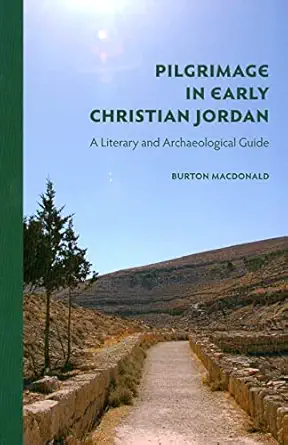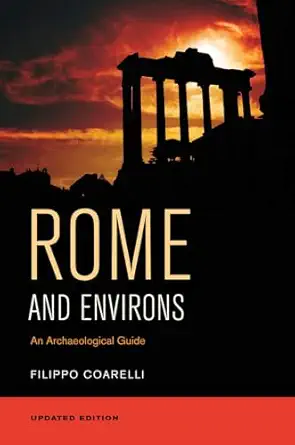
Table of Contents
The most ancient archeological sites in the world
The oldest archaeological sites are in Africa and date back to about 3.3 million years ago. These include:
Olduvai Gorge, Tanzania
One of the most important paleoanthropological sites in the world, where remains of early human ancestors such as Homo habilis have been found.
Olduvai Gorge, Tanzania is located in northern Tanzania and is considered one of the most important paleoanthropological sites in the world. It has provided important evidence of early human evolution, including remains of early human ancestors such as Homo habilis and Paranthropus boisei. These findings have helped researchers to better understand the evolutionary process that led to the development of modern humans.
Video: Olduvai, the cradle of Humankind
Laetoli, Tanzania
A famous site where hominid footprints, believed to be 3.6 million years old, have been preserved in volcanic ash.
Laetoli is a famous site located in northern Tanzania that is famous for preserving hominid footprints that are believed to be 3.6 million years old. These footprints, which were left in volcanic ash, provide important evidence of early human bipedalism and suggest that the ability to walk on two feet is an ancient trait that evolved early in human evolution.
Video: The Laetoli footprints
Lomekwi, Kenya
The site of stone tool finds that are estimated to be about 3.3 million years old, which could push back the date of the earliest tool use by half a million years.
Lomekwi is an archaeological site in Kenya that has revealed stone tools that are estimated to be about 3.3 million years old. These finds could push back the date of the earliest tool use by half a million years and provide new insights into the evolution of human cognition and manual dexterity.
Video: Lomekwi, oldest stone tools
Göbekli Tepe, Turkey
A 11,000-year-old megalithic site that predates Stonehenge and the Pyramids.
Göbekli Tepe is an 11,000-year-old megalithic site located in southeastern Turkey. It is considered one of the most important archaeological discoveries of the 20th century and predates Stonehenge and the Pyramids. The site features circular structures with massive stone pillars and intricate carvings and is thought to have been a religious or spiritual center for early communities in the region.
Video: Göbekli Tepe Official Archaeological Update
Catalhöyük, Turkey
A Neolithic settlement dating back to 7500 BCE.
Catalhöyük is a Neolithic settlement that was occupied between 7500 BCE and 5700 BCE. It is located in central Turkey and is one of the largest and best-preserved Neolithic sites in the world. The site provides important insights into early human settlement patterns, social organization, and technological innovations, such as the use of mud bricks for construction.
Video: Çatalhöyük and the dawn of Civilization
Meroë, Sudan
An ancient city that was the capital of the Kingdom of Kush from 800 BCE to 300 CE.
Meroë was an ancient city that was the capital of the Kingdom of Kush from 800 BCE to 300 CE. It is located in central Sudan and was a major center for iron production and trade in the ancient world. The site features well-preserved ruins of palaces, temples, and iron-working workshops and provides important insights into the political, economic, and cultural developments of the Kingdom of Kush.
Video: Explore Sudan’s pyramids of Meroë
Archeological sites in South Africa
What they just captured in Africa shocks the whole world
South Africa is home to many important archaeological sites that shed light on the region’s rich history and cultural heritage.
Some of the most notable sites include:
Blombos Cave
A Middle Stone Age site located along the southern coast of South Africa that has provided important evidence of early human behavior and technology. The site is known for its engraved ochre and shell beads, which are considered some of the earliest examples of symbolic behavior in the human species.
Video: Flingknapping Still Bay Point from Blombos Cave in South Africa
The Cradle of Humankind
This is a World Heritage site located in the Gauteng province of South Africa that contains a rich concentration of hominid fossils. The site has produced some of the oldest and most complete hominid skeletons, including the famous Australopithecus africanus specimen known as “Mrs. Ples“.
Video: the cradle of humenkind
Mapungubwe Hill
This is the site of an ancient kingdom located in the Limpopo province of South Africa that was inhabited from the 11th to the 14th centuries. The site provides important evidence of the complex political and economic systems of the kingdom, as well as its sophisticated arts and crafts.
Video: Mapungubwe, secrets of the sacred hill
Fish Hoek
This site is located near Cape Town and has produced evidence of early human habitation in the region dating back to the Middle Stone Age. The site has provided important insights into the technology and subsistence strategies of early human populations in southern Africa.
Archeological sites in Europe
Europe is home to many important archaeological sites that span thousands of years of human history and culture. Some of the most notable sites include:
Atapuerca, Spain
This site is located in northern Spain and contains a series of caves that have produced important hominid fossils and stone tools. The site is particularly famous for the discovery of the Homo antecessor, which is considered one of the earliest human species in Europe.
Stonehenge, England
This is a prehistoric monument located in Wiltshire, England that is composed of large stones arranged in a circular formation. Stonehenge is considered one of the most famous archaeological sites in Europe and has been the subject of much speculation and research.
Video: Who built Stonehenge
Knossos, Crete
This is the site of an ancient Minoan palace located in Crete, Greece. The palace was the center of Minoan culture and politics and provides important insights into the sophisticated social, political, and economic systems of the ancient Minoans.
Pompeii, Italy
This is the site of an ancient Roman city located near Naples, Italy that was destroyed by the eruption of Mount Vesuvius in 79 CE. The city was preserved under volcanic ash for over 1700 years and provides an unparalleled window into the everyday life of ancient Rome.
Çatalhöyük, Turkey
This is one of the largest and best-preserved Neolithic settlements in the world, located in central Turkey. The site provides important insights into early human settlement patterns, social organization, and technological innovations.
Archeological sites in China
China is home to many important archaeological sites that span thousands of years of Chinese history and culture. Some of the most notable sites include:
Xian Terracotta Warriors
This site is located near Xian in China and contains thousands of life-sized terracotta warriors and horses that were buried with the First Emperor of China in the third century BCE. The warriors provide important insights into the military, political, and cultural practices of the early Chinese empire.
The Great Wall of China
This is a series of fortifications built along the northern borders of China to protect against invasions from nomadic tribes. The wall is one of the most famous archaeological sites in China and provides important insights into the military and defensive strategies of ancient China.
Video: The great wall of China, how was it built?
Banpo Village
This is a Neolithic village located near Xian that was inhabited from about 5000 to 3000 BCE. The village provides important insights into early Chinese settlement patterns, subsistence strategies, and technological innovations.
Mawangdui Han Tombs
This site is located in Hunan province and contains the tombs of the Western Han dynasty. The tombs are famous for their rich burials, which include lacquerware, silk textiles, and ancient medical texts, and provide important insights into the material culture and daily life of ancient China.
Sanxingdui Museum
This is a museum located in Sichuan province that is dedicated to the preservation and display of artifacts from the ancient Shu kingdom. The artifacts include bronze sculptures, jade objects, and gold masks and provide important insights into the art, religion, and politics of ancient China.
Archeological sites in Russia and India
Russia and India are both home to many important archaeological sites that span thousands of years of human history and culture.
Some of the most notable sites in Russia
The Hermitage Museum, St. Petersburg
This museum contains one of the largest and most comprehensive collections of art and artifacts in the world, including many important archaeological treasures. The collection includes artifacts from ancient civilizations such as Egypt, Greece, and Rome, as well as important works of Russian art and culture.
The Kremlin, Moscow
This is the historic fortified complex that has served as the center of political power in Russia for centuries. The complex includes several important archaeological sites, including the Cathedral of the Assumption, the Armory, and the Diamond Fund.
Novgorod, Russia
This is a city in western Russia that was an important center of trade and culture during the medieval period. The city contains many important archaeological sites, including the Novgorod Kremlin, St. Sophia Cathedral, and the Yaroslav’s Court.
Some of the most notable archaeological sites in India
The Taj Mahal, Agra
This is one of the most famous and iconic buildings in the world and is considered one of the finest examples of Mughal architecture. The Taj Mahal was built in the 17th century as a mausoleum for the wife of the Mughal Emperor Shah Jahan.
Ajanta Caves, Maharashtra
This is a series of rock-cut cave temples located in western India that were built between the 2nd century BCE and the 6th century CE. The caves contain important Buddhist art and architecture and provide important insights into the religious and cultural practices of ancient India.
Harappa, Punjab
This is one of the most important archaeological sites in India and is considered one of the key sites of the Indus Valley Civilization. The site has produced important evidence of early urban planning, metallurgy, and trade in ancient India.
Elephanta Caves, Maharashtra
This is a series of rock-cut cave temples located near Mumbai that were built in the 6th and 7th centuries CE. The caves contain important Hindu and Buddhist art and architecture and provide important insights into the religious and cultural practices of ancient India.
Archeological sites in Australia
Australia is home to many important archaeological sites that span thousands of years of human history and culture. Some of the most notable sites include:
Uluru (Ayers Rock), Northern Territory
This is one of Australia’s most famous landmarks and is a large sandstone rock formation located in the central desert. Uluru is an important sacred site for the local Anangu people and contains many important cultural and spiritual features.
Kakadu National Park, Northern Territory
This is one of Australia’s largest national parks and is home to many important Aboriginal rock art sites. The park contains rock art that dates back tens of thousands of years and provides important insights into the cultural, spiritual, and historical beliefs of the local Indigenous people.
Mungo National Park, New South Wales
This is an important archaeological site that contains evidence of human habitation in Australia for over 40,000 years. The site contains important evidence of early human technology, subsistence strategies, and cultural practices in Australia.
Willandra Lakes, New South Wales
This is a series of ancient lake beds located in western New South Wales that contain important evidence of human habitation and climate change in Australia. The lakes contain important evidence of early human migration, technological innovation, and environmental change in Australia.
These are just a few examples of the many important archaeological sites in Australia that have contributed to our understanding of the country’s rich cultural heritage and human history. Australia is home to one of the world’s oldest and most diverse Indigenous cultures and its archaeological sites provide important insights into the cultural, spiritual, and historical beliefs of the local Indigenous people.
The Uluru (Ayers rock) culture
Uluru (also known as Ayers Rock) is a large sandstone rock formation in the southern part of the Northern Territory in central Australia. It is a sacred site to the Anangu, the Indigenous people of the area, and has significant cultural and spiritual importance. The Anangu have a long and rich history associated with Uluru, including creation stories, songs, and ceremonies that have been passed down for generations. Uluru is also a popular tourist destination and attracts thousands of visitors from around the world each year.
The Sulu culture
Sulu is a region in the southern Philippines that is comprised of the provinces of Basilan, Sulu, and Tawi-Tawi. It is known for its rich cultural heritage, with a mix of indigenous, Malay, and Islamic influences. The Sulu Archipelago is home to several ethnic groups, including the Tausug, Samal, and Badjao, each with their own unique customs, languages, and traditions. The Sulu Sea, which surrounds the region, has been an important trading route for centuries and has helped to shape the diverse cultural heritage of the area. Additionally, the region is famous for its historic cultural and religious sites, such as the Tausug Royal Palace, the Tabuan-Lasa Grand Mosque, and the Sulu Sultanate Palace Museum.
The Tulum culture
Tulum is a coastal town in the Mexican state of Quintana Roo, located on the Yucatán Peninsula. It is known for its stunning beaches, turquoise waters, and well-preserved Mayan ruins, which sit atop a bluff overlooking the Caribbean Sea. The Mayan ruins of Tulum are some of the best-preserved in Mexico and were once a thriving seaport and walled city. Today, Tulum is a popular tourist destination, attracting visitors from around the world who come to explore the ancient ruins, relax on the beach, and experience the unique culture and natural beauty of the region. Tulum is also known for its wellness and eco-tourism, with many yoga and wellness retreats, as well as sustainable and eco-friendly accommodations and activities.
Table summarizing the ancient archaeological sites mentionned above
| Site | Location | Time Period | Culture/Civilization | Key Features |
| Göbekli Tepe | Turkey | 11,000 BCE – 8000 BCE | Pre-Pottery Neolithic | Earliest known monumental architecture, possible religious/ritual site |
| Çatalhöyük | Turkey | 7500 BCE – 5700 BCE | Neolithic | One of the earliest and largest known settlements, important evidence of early urbanism and religion |
| Stonehenge | England | 2500 BCE – 1500 BCE | Bronze Age | Large stone monument, possible astronomical, religious, and cultural significance |
| Pyramids of Giza | Egypt | 2600 BCE – 2500 BCE | Ancient Egyptian | Three large pyramids, evidence of early monumental architecture and religious beliefs |
| Machu Picchu | Peru | 1450 CE – 1532 CE | Inca | Large mountain city, important evidence of Inca culture and engineering |
| Uluru (Ayers Rock) | Australia | Unknown | Indigenous Australian | Sacred site for the Anangu people, contains important cultural and spiritual features |
| Kakadu National Park | Australia | Unknown | Indigenous Australian | Contains many important Aboriginal rock art sites |
| Mungo National Park | Australia | 40,000 years BCE – Present | Various | Evidence of human habitation in Australia, important insights into early human technology, subsistence strategies, and cultural practices |
| Willandra Lakes | Australia | 40,000 years BCE – Present | Various | Series of ancient lake beds, important evidence of early human migration, technological innovation, and environmental change in Australia |
| Cahokia Mounds | USA | 900 CE – 1400 CE | Mississippian | Large and complex site, center of the Mississippian culture, important evidence of early urbanism, monumental architecture, and political complexity |
| Chaco Culture National Historical Park | USA | 850 CE – 1250 CE | Chacoan | Center of the Chacoan culture, important evidence of early astronomical knowledge, monumental architecture, and trade |
| Mesa Verde National Park | USA | 600 CE – 1300 CE | Ancestral Pueblo | Home of the ancestral Pueblo people, important evidence of early agriculture, architecture, and cultural practices |
| Tulum | Mexico | 1000 CE – 16th century | Maya | Important center of the Maya civilization, important evidence of early writing, architecture, and trade in Mesoamerica |
| Great Serpent Mound | USA | 1000 BCE – 200 CE | Adena | Large earthwork, believed to have astronomical and spiritual significance |
Main beliefs associated with the ancient archaeological sites
The main beliefs associated with the ancient archaeological sites mentioned in our conversation varied greatly depending on the culture and civilization that created them. Here is a brief overview of some of the main beliefs associated with each site:
- Göbekli Tepe: This site is believed to have been a religious or ritual center, possibly related to early belief systems centered around the worship of animals or ancestor worship.
- Çatalhöyük: This site is believed to have been a religious center, with evidence of early fertility cults and animal worship.
- Stonehenge: This site is believed to have had astronomical, religious, and cultural significance, with possible connections to solar and lunar observatories, death and burial practices, and political and cultural power.
- Pyramids of Giza: This site is believed to have been a religious center dedicated to the worship of the pharaohs and their connection to the gods. The pyramids were also believed to have served as tombs for the pharaohs and their consorts.
- Machu Picchu: This site is believed to have been a religious and political center for the Inca, with possible astronomical and agricultural purposes as well.
- Uluru (Ayers Rock): This site is sacred to the Anangu people and is believed to be connected to creation stories and spiritual beliefs about the land and its resources.
- Kakadu National Park: This site contains many important Aboriginal rock art sites, believed to be connected to the Dreamtime and creation stories, as well as religious and spiritual beliefs about the land and its resources.
- Mungo National Park: This site contains evidence of human habitation in Australia, with beliefs and practices likely varying greatly among the various cultures and civilizations that occupied the area over time.
- Willandra Lakes: This site contains evidence of early human migration and technological innovation, with beliefs and practices likely varying greatly among the various cultures and civilizations that occupied the area over time.
- Cahokia Mounds: This site is believed to have been the center of the Mississippian culture, with evidence of religious beliefs centered around the worship of the sun, the underworld, and ancestors.
- Chaco Culture National Historical Park: This site is believed to have been a center of the Chacoan culture, with evidence of astronomical and religious beliefs, as well as trade and political power.
- Mesa Verde National Park: This site was the home of the ancestral Pueblo people, with beliefs likely centered around agriculture, ancestor worship, and spiritual practices connected to the land and its resources.
- Tulum: This site was an important center of the Maya civilization, with beliefs likely centered around writing, trade, astronomy, and religion, as well as political power.
- Great Serpent Mound: This site is believed to have astronomical and spiritual significance, with possible connections to the worship of the sun and the underworld, as well as the cycles of life and death.
Note: The information provided may not be entirely up-to-date or comprehensive. The beliefs associated with these sites are also subject to ongoing research and interpretation and may be revised or refined as new information becomes available
These are just a few examples of the many ancient archaeological sites that have been uncovered around the world that have contributed to our understanding of the region’s rich cultural heritage and human history.
Shop tip
Ancient archeology sites in the world on Amazon
What is you favorite archeological place or object and why?
Sources openai Language models, aitrot, picsart and mib
Take time to learn
Invest in your future
Embark on a journey into the realm of affiliate marketing and craft your own website within a vibrant, supportive community. Join me in this adventure, where you can begin as a free starter and stay as long as you desire. Enjoy complimentary hosting and foundational teachings to set you on your path. For those with advanced skills, opportunities to elevate your expertise await. Take a moment to explore and witness the magic for yourself!







